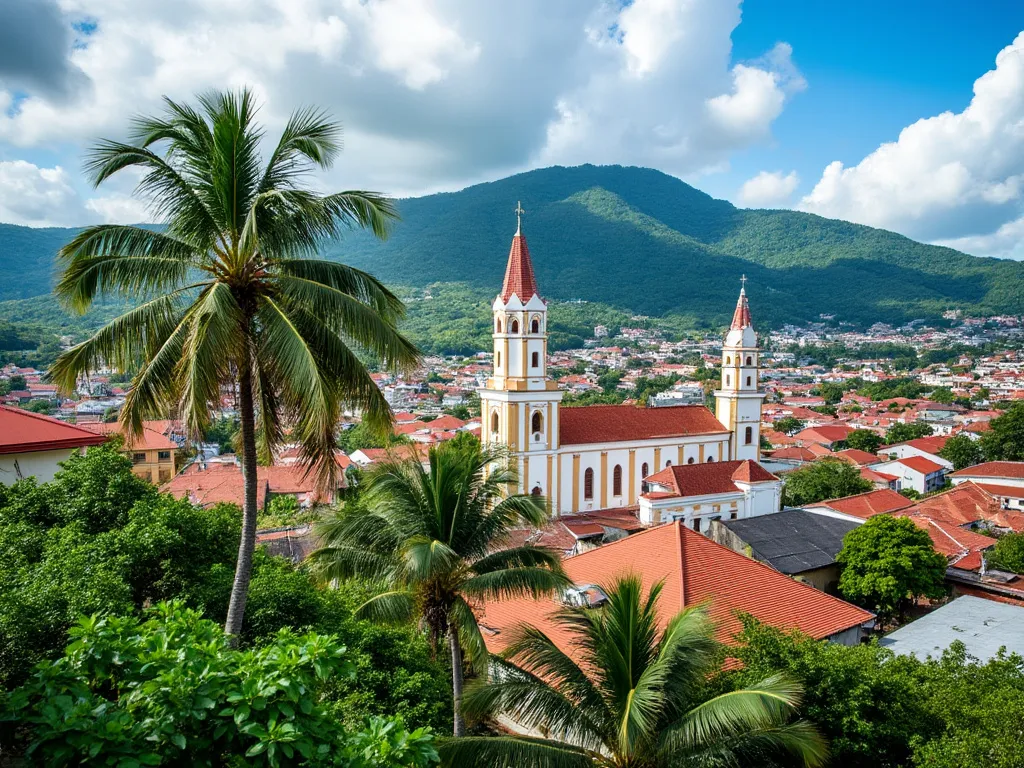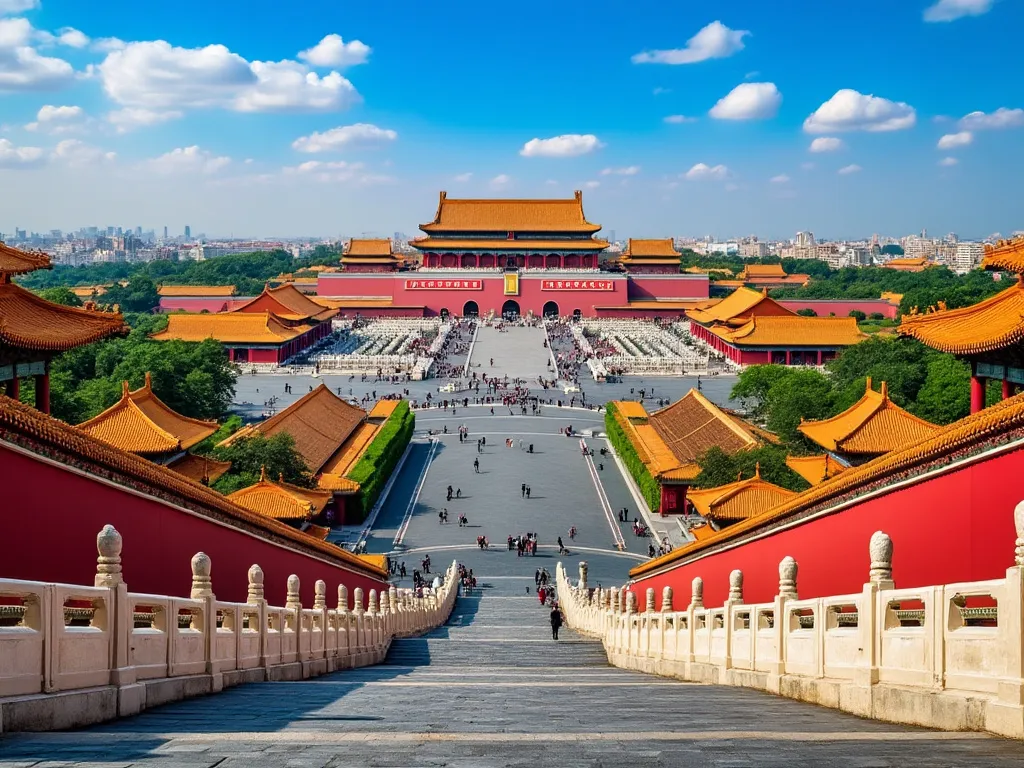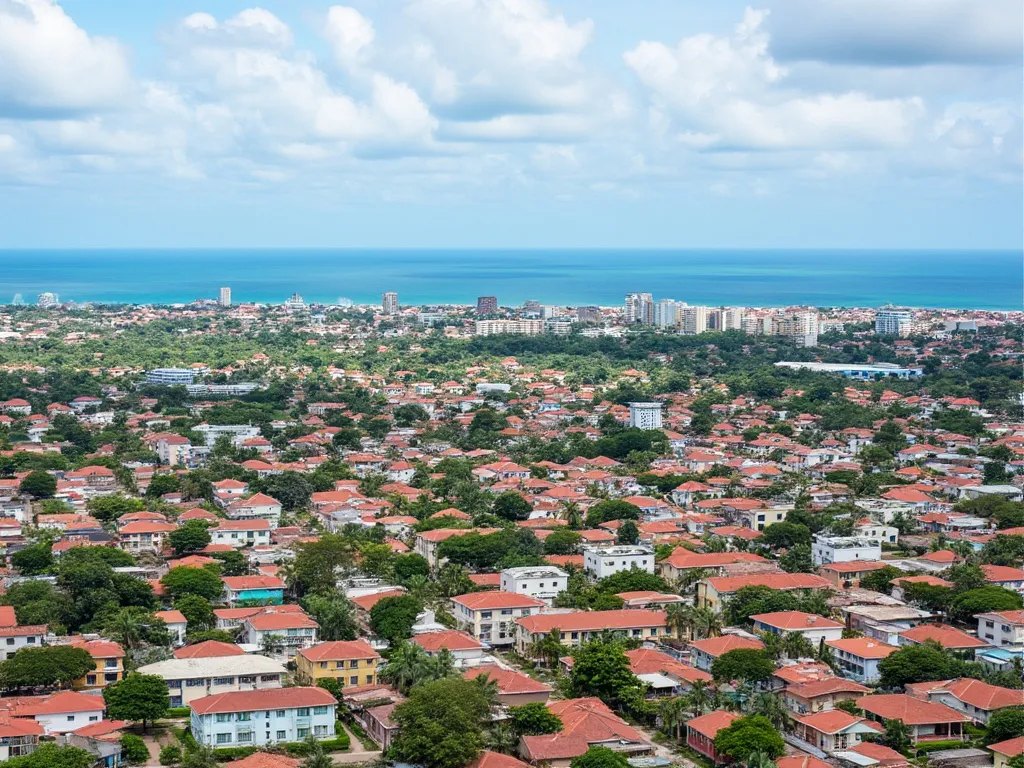
Basse-Terre is the capital of Guadeloupe, an overseas department of France located in the eastern Caribbean Sea. The city is situated on the southwest coast of the island of Basse-Terre, which is the largest island in the Guadeloupe archipelago.
Basse-Terre Information
| Country | 🇬🇵 Guadeloupe |
| Population | 12,451 (as of 2020) |
| Coordinates | 16.0167° N, 61.7333° W |
| Area | 5.78 km² (2.23 sq mi) |
| Climate | Tropical monsoon climate |
| Language | French (official), Guadeloupean Creole |
| Currency | Euro (€) |
| Time zone | UTC-4 (AST) |
| Proximity to other major cities | Pointe-à-Pitre (10 km), Les Abymes (15 km), Saint-Claude (20 km) |
Historical Background of Basse-Terre
Basse-Terre was founded in 1643 by French colonizers, who established a settlement on the site of a former Carib Indian village. The city quickly grew into a major commercial center, with a thriving sugar industry and a busy port. In 1703, Basse-Terre was declared the capital of Guadeloupe, a status it has maintained to this day.
Geographical Location of Basse-Terre
Basse-Terre is situated on the southwest coast of the island of Basse-Terre, which is the largest island in the Guadeloupe archipelago. The city is nestled in a natural amphitheater, surrounded by lush tropical forests and towering volcanic peaks. The nearby La Soufrière volcano, which rises to an elevation of 1,467 meters (4,813 ft), is a popular destination for hikers and nature lovers.
Cultural Significance of Basse-Terre
Basse-Terre is a city with a rich cultural heritage, reflecting its history as a French colonial outpost and its African, European, and indigenous influences. The city is home to a number of historic landmarks, including the 17th-century Fort Delgrès and the 19th-century Cathedral of Saint-Pierre-et-Saint-Paul. The city also hosts a number of cultural festivals throughout the year, including the Fête de la Musique and the Festival de la Guadeloupe.
Economic Importance of Basse-Terre
Basse-Terre is the economic hub of Guadeloupe, with a diverse economy based on tourism, agriculture, and manufacturing. The city is home to a number of major industries, including sugar production, rum distillation, and textile manufacturing. The city's port is also an important center for trade and commerce, with regular shipments of goods to and from France and other Caribbean islands.
Interesting Facts About Basse-Terre
- Basse-Terre is home to the oldest cathedral in the Caribbean, the Cathedral of Saint-Pierre-et-Saint-Paul.
- The city is situated near the La Soufrière volcano, which is one of the most active volcanoes in the Caribbean.
- Basse-Terre is the birthplace of the famous French writer and politician, Victor Schœlcher.
Tourist Attractions in Basse-Terre
- Fort Delgrès: a 17th-century fort that offers stunning views of the city and the surrounding countryside.
- Cathedral of Saint-Pierre-et-Saint-Paul: a beautiful 19th-century cathedral that is one of the oldest in the Caribbean.
- La Soufrière volcano: a popular destination for hikers and nature lovers.
- Basse-Terre Market: a bustling marketplace where visitors can sample local cuisine and buy handicrafts.
In conclusion, Basse-Terre is a city with a rich history, a diverse culture, and a stunning natural environment. From its historic landmarks to its vibrant cultural festivals, there is something for everyone in this beautiful Caribbean city.
Conclusion on Basse-Terre
Basse-Terre is a city that seamlessly blends traditional and modern culture, with a rich history, stunning architecture, and a strong economy. From its iconic landmarks to its vibrant cultural festivals, Basse-Terre is a city that has something for everyone. Whether you're interested in history, culture, or simply want to experience the beauty and charm of the Caribbean, Basse-Terre is a must-visit destination.
 Basseterre
Basseterre
 Beijing
Beijing
 Bangui
Bangui
 Banjul
Banjul